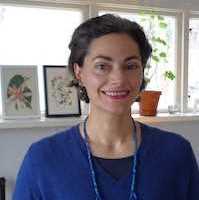Techne
Viveca Mellegård profile

Viveca Mellegård
Royal Holloway University of London
(2021)
Viveca.Mellegard.2021@live.rhul.ac.uk
Supervisor(s)
Prof David Simon (Royal Holloway), Prof Mark Nesbitt (Royal Botanic Gardens, Kew), Prof Erik Andersson (University of Helsinki and Stockholm Resilience Centre). Advisor: Jenny Balfour Paul.